https://www.youtube.com/watch?v=INiAM1u925E
POV How to Cook a Steak
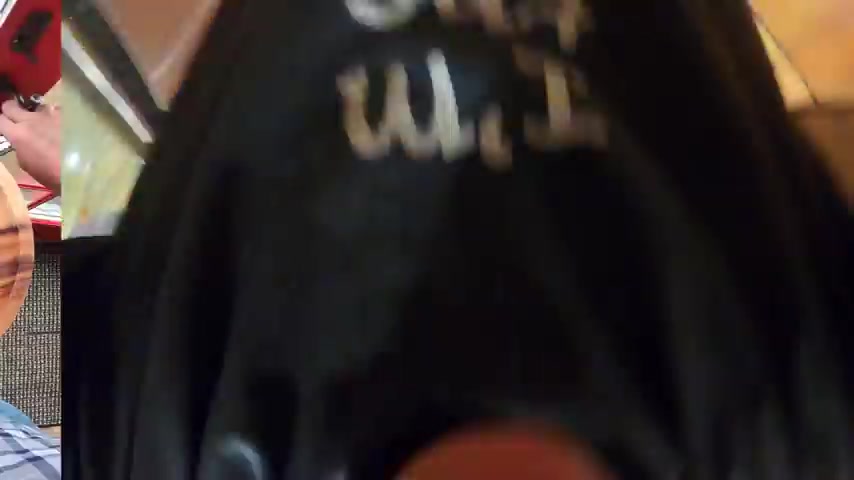
Hey , can you hear ?
Um , it's late at night but , um , I'm gonna start working on the steak .
Um , I was at the supermarket earlier today , um , where people were definitely not keeping their distance as much as they should .
Um , but there were these , uh , nice looking prime steaks .
Uh , so I got one .
Um , this is like , I don't know how much this is .
This is like a pound and a quarter maybe .
Um , prime rib eye , rib eye is my favorite steak .
Um , so pretty decent marbling , not the best , but pretty decent marbling .
Um , but what I really like about this particular steak is that there is a lot of this muscle right here , which is the spinal .
So this is the loin , this is like , kind of like if you're looking at your back .
Oh , let me come here .
All right .
So good girl .
So this is the loin back here .
The muscles that run along either side of , um , the spine .
Yeah , you like that , right ?
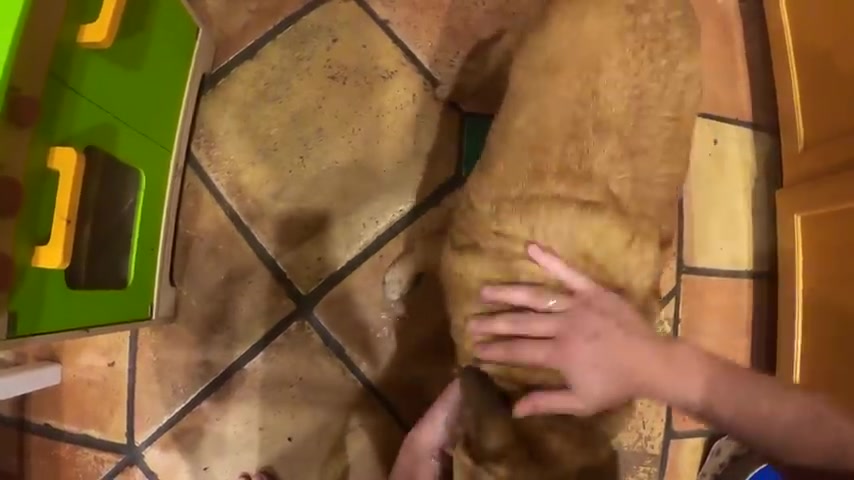
Um , and the tenderloin would be on the sort of inside of the rib cage .
Um , if we're looking at a , um , uh , beef , uh , this would be the chuck the round back here , brisket down here .
You got a nice brisket , chao cheeks up here .
Beef cheeks are delicious .
All right , let's get back to that steak .
Rib eye steak comes from the loin .
Um A T bone steak is when you cut out , um , you , when you get a section of both the loin and the tenderloin , um , which are on either side of , of a rib bone .
Uh , the New York strip is , um , the same muscle as the rib eye , uh , but taken from a little bit further , um , a little bit further back .
Um , so , but what I like about the rib eye is that it has this bit of muscle , which is called the spinal .
You can , it's also called the rib eye cap , um , which is the , I think the most flavorful piece of meat on the steer .
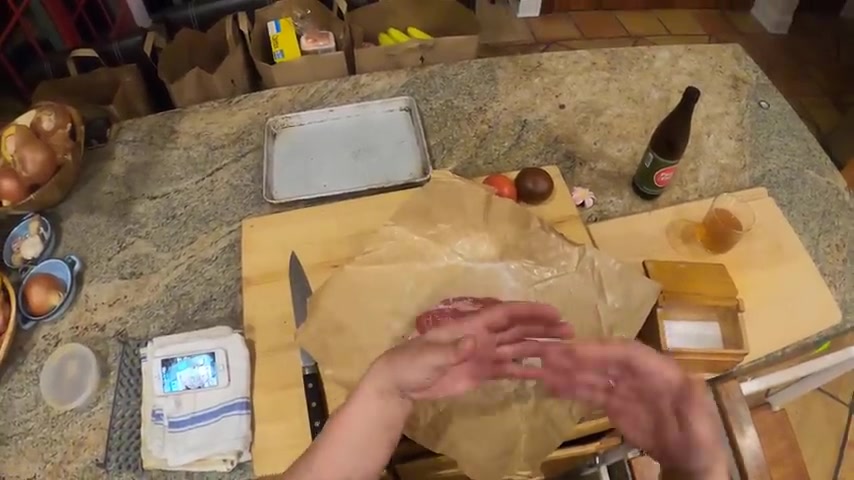
Um , anyhow tonight , um , all I'm doing is taking this out and getting it ready for tomorrow because I'm gonna , I'm gonna cook it tomorrow .
Um , you don't really have to do this but , um , when you're salting your steak , um , the one thing you don't want to do is salt it , let it sit for like 10 , 15 minutes or so and then cook it because what happens is when you salt a steak , um , initially the salt is going to start pulling out juices uh through osmosis .
Um , and you'll see them start sort of beating up on the surface if your steak is wet on the surface to begin with , instead of searing properly , instead of that energy going towards browning your meat and searing it .
Um , you end up spending all that energy evaporating the moisture from it , which is not really what you want to do .
So I'm doing this the night before , um , that gives salt the opportunity to sort of work into the meat and here's the important thing when we put it back in the fridge , you don't want to wrap it tightly because you don't want to trap moisture against it .
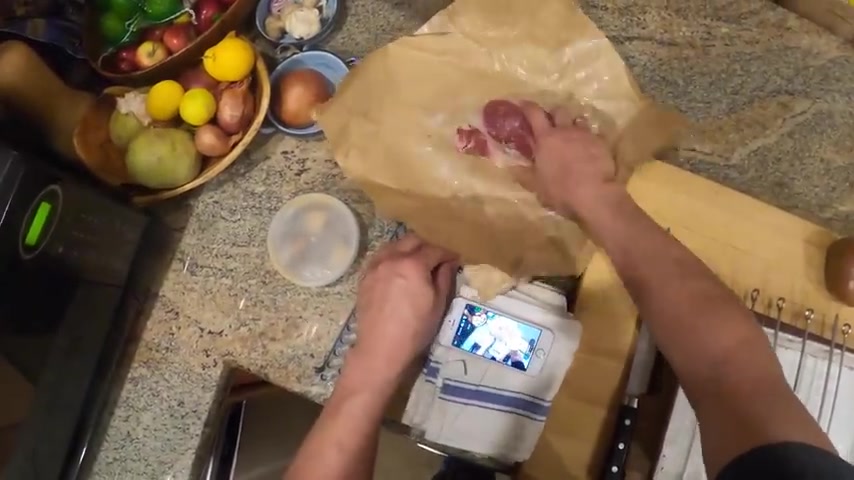
Um , what I'm gonna do is I don't have a rack this size .
So I'm just gonna , uh , I'm gonna take these skewers and lamb across here , I'm putting the stick on it so it stays elevated .
Oh , you might be thinking I used a lot of salt .
Um , I did , um , but that's how much you want to salt a piece of meat .
The meat is not seasoned on the interior .
Um , so you want to use quite a bit of salt on the exterior so that when you take a bite of it , um , it really sort of seasons , it's enough seasoning to season the whole thing .
Um , I always sort of describe the amount of salt you put on a steak as , um , I describe it as what , like a snow flurry looks like on an empty parking lot .
Um , in New England .
So , um , that's a useful metaphor for uh , um , people who , who go to empty parking lots in New England , in the , in the winter .
Um , I'm not sure it's useful for anyone else .
Oh , look .
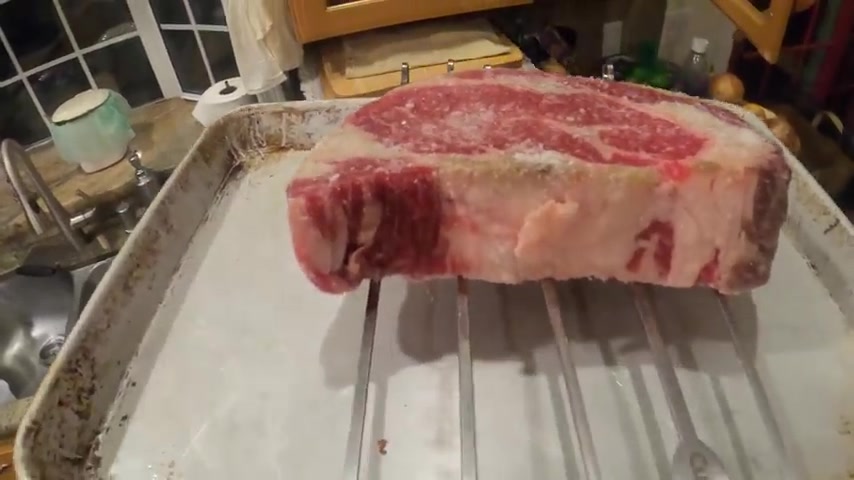
So , so you can already start to see , um , the salt pulling out moisture .
You see , it's starting to get a little bit wet on the surface .
Um , I , I have no idea if you can see that or not .
I'm gonna try and get you at an angle where you can , can you see that ?
Well , anyhow , it's starting to get a little bit wet on the surface .
Um And as this sits , um it's gonna get wetter and wetter and wetter .
Let me just show you .
Hold on .
Oh , and I'm gonna do a trick that my friend told me I should think about when doing these videos ready .
I'm gonna be back in just about 7.5 minutes .
Uh So it's been 7.5 minutes .
Um So I'm just gonna hold the camera this time so you can kind of see a little better .
But , um , so you can see there's that kind of glistening with moisture .
Um That's the water that's been drawn out by the salt .
And if we were to sear this right now , um put it in a pan , um It would take some amount of time probably like a minute or two for to boil off all that water to get back to the point where um you were with a very dry steak .
Um , although to be honest with a steak , this stick , it doesn't really matter that much .
Um , because , uh , it takes so long to cook through anyway that there's plenty of time to develop a good crust .
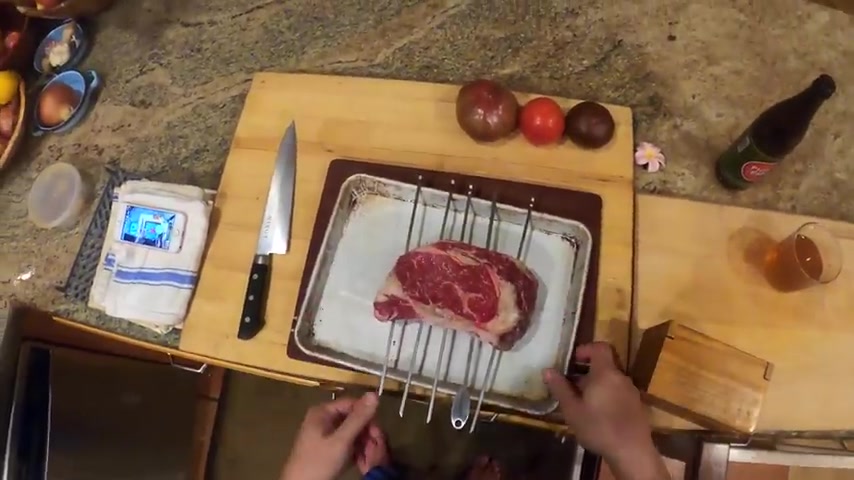
But , um , especially with thinner steaks , um , you don't wanna do that salt thing .
Um , you , you do want to either do it just before cooking or , uh , 45 minutes before cooking .
Um , now the reason I'm putting it on this rack here , um , is because you want the surface of the steak to be dry as possible before , um , before you start cooking it .
Um , and that's so that you can develop that sear .
Um , and it also helps sort of , uh , make the steak last longer .
Um , this is a good trick if your steak looks like it's about to go off and it's wrapped up really tightly in plastic in the fridge .
Um , take it out of that plastic , put it on a plate , put it on , elevated from a plate so that air can circulate all around it .
Um , and it'll actually last , um , quite a bit longer than it would if it , as if it were wrapped in plastic and all that moisture is trapped against it .
Um , so I'm elevating it with these , uh , skewers so that the surface can dry out , which will let us get a better sear tomorrow .
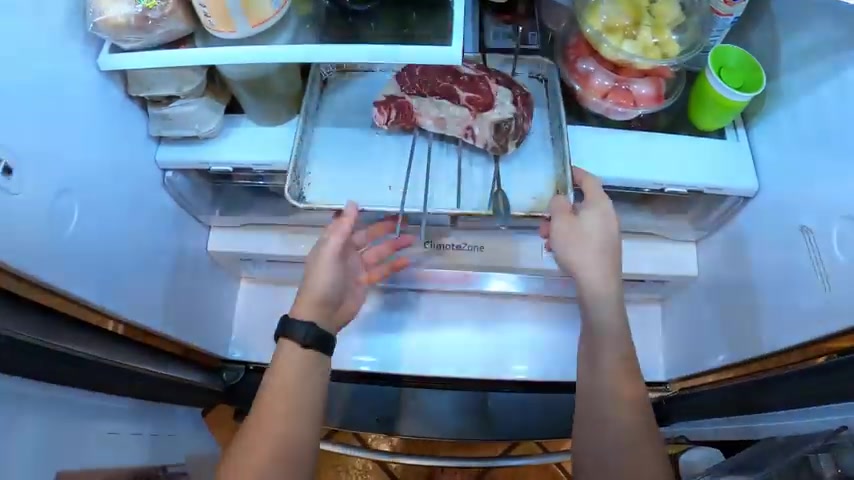
So , now this is going in the fridge and I will see you in 24 hours .
It's been 24 hours now , since I put this steak in here , actually 21 hours .
Um , I ran out of time today .
Some things came up .
Um , so I didn't actually get a chance to cook the steak today , but that's fine .
What's nice about this method ?
Um , where you elevate it and leave it uncovered is that it actually extends the shelf life of the steak .
Um , because the surface starts to dry out .
Um , there's very little water activity in there , which means that there's less of a , less stuff for the , um , a bacteria to move around in .
And so you actually slow down the , well , the rotting process .
So your sticks actually last quite a bit longer when you leave them out open like this , I'm going to let them go for one more day until tomorrow .
And in fact , it's actually going to improve it a little bit .
You know , the longer you let it go , the further the salt works , it's way into it .
Um , and the more tender it becomes , the more able it is to retain moisture .
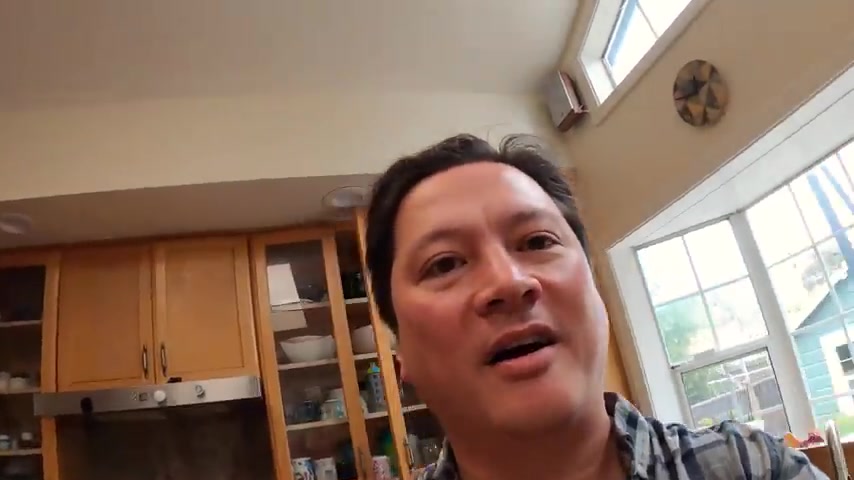
Um , and most importantly , um , the surface gets drier and drier and the drier the surface you have , um , the more easily you can sear it .
So we will come back to this one again in .
All right .
This is now , uh , it's been in the printer now for two days , um , which is totally fine you can stay in there , you know , for a long time , basically until it starts to really dry out .
And , um , but it's gonna , you know , it could take like a week or so is fine in there .
It's been in the fridge now for a couple of days .
Um , you can see how nice and dry the surface is , um , which is exactly what you're looking for because that's gonna help it .
Sear .
Um , I was thinking originally that I was gonna do this using um the reverse Sear method , which is um this is a method I developed for cooks illustrated back in like 2006 or seven .
uh Essentially with that method , you put the uh steak inside a low temperature oven or on the cooler side of a grill , you know , like 252 175 degrees .
Um Let it come most of the way up to temp through and through and then you sear it in a pan .
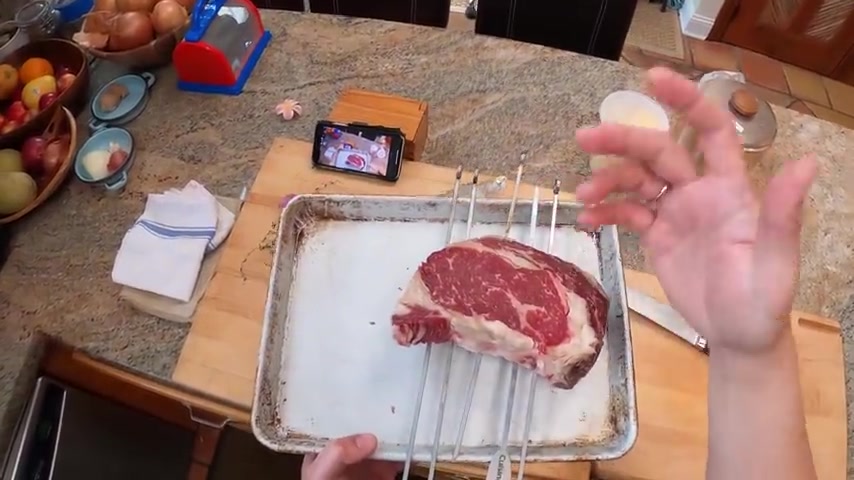
Um And what that does is it gives you a very nice even edge to edge pinkness throughout .
Um And it also sort of uh tenderizes a little bit because there's some enzymatic action that helps the um uh the meat .
Uh the Mussels actually get more tender throughout that process .
Um But I'm not gonna do that method today .
So I'm just gonna um pan sear it .
Um butter based it uh just because I feel like it Um And because that method sometimes takes a little bit too long and we're , we're getting ready for lunch .
Um So I'm gonna do this in a uh copper pan .
Um copper really good for searing and for sauteing because it has um copper is very conductive .
So it gives you a very nice even heat .
Um You could also do , you know , this is a triply stainless skillet with an aluminum layer in the middle .
This is , you probably have one of these at home .
Um You could do it in cast iron , you can do it in carbon steel .
It doesn't really matter that much as long as the pan is nice and heavy .
Um , yesterday .
So I , well , I like to think of the pan as like a bucket that you're filling up with energy .
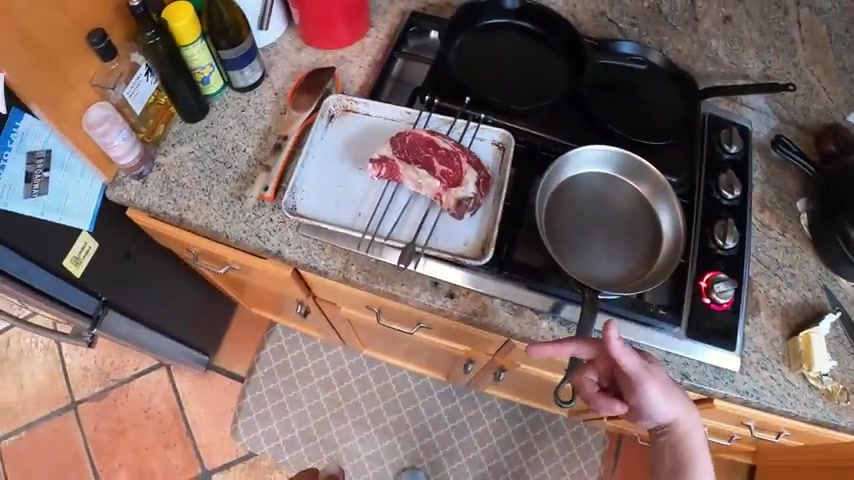
Um , and the stove top , you know , it's kind of like a bucket that you're filling up with a tap .
Um And the stove top , the burner is the uh is the tap that's pouring energy into the pan .
Um , a pan can only hold a certain amount of energy but the uh the higher the specific cap capacity of the material .
Um and the higher the mass of the pan , uh the more energy it's gonna be , be able to hold , that's like having a bigger bucket .
Um So a nice thick pan is important because you want a lot of energy in that pan .
And because as soon as you add the meat to it .
It's going to start and start and start .
Basically , you're pouring that energy off into the meat .
Um , and that's also one of the reasons why it's super important to let your meat dry out really nicely because it takes a ton of energy to evaporate moisture .
It takes about five times more energy to evaporate a gram of water than it does to take that same gram of water from zero degrees Celsius all the way to 100 degrees Celsius .
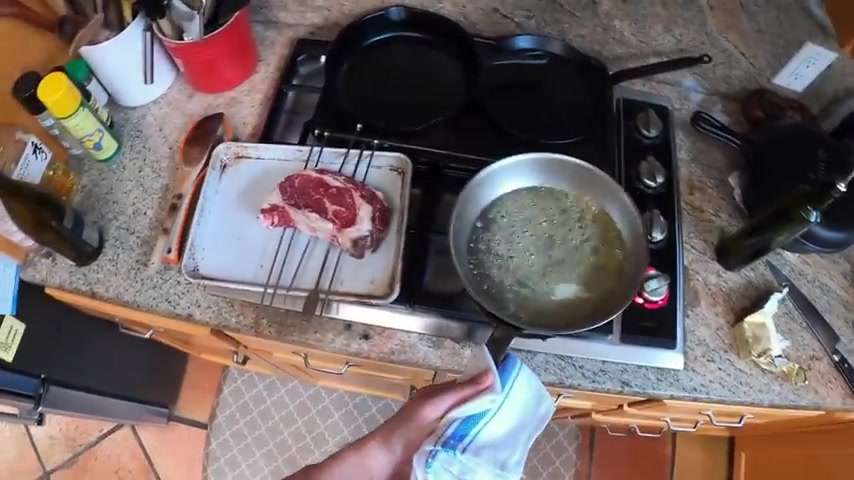
So to take something out of the , not frozen but out of the , out of the , out of the fridge , up to um up to boiling , it takes five times more energy than that to actually evaporate it .
So having a nice dry surface on your steak is important .
This is just a little bit of , well , I use olive oil .
Normally I'd use grape seed canola or something .
I don't think I have any right now .
This is just olive oil and some butter .
Now with a big , nice , nice big steak like this , you actually don't have to get the pan super ripping hot .
Um Just a mild heat is fine because it's gonna take a long time to cook through anyway .
Um , and uh that's gonna be plenty of time for a crust to develop .
So let the butter butter sizzle .
Get the steak in there .
There you go .
Now , a lot of people ask , you know , what's the best way to cook a steak .
Um , you know , some people will say flip it every now and then some people will say only flip it once some people will say the reverse sear .
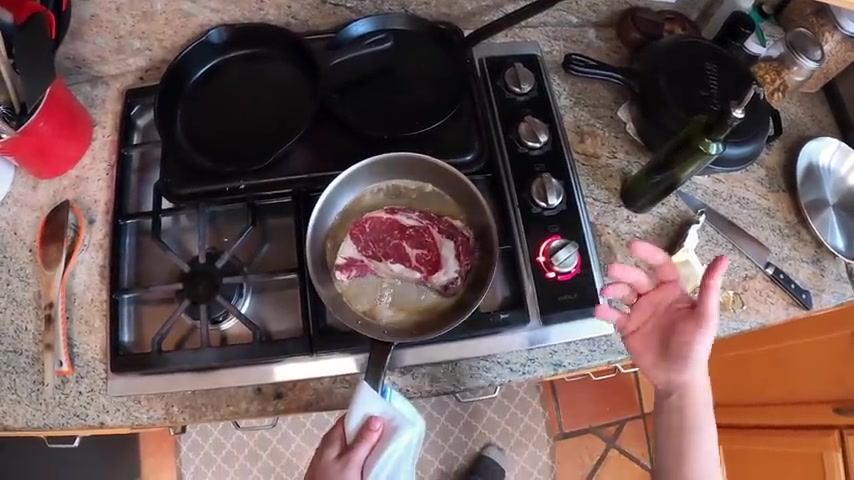
Um , which , you know , I am generally partial to that .
Just not today .
Um , there's not really a right answer .
You know , as long as you're starting with a nice piece of meat , something with good marbling , something with good flavor , you're letting it , you're letting it develop a nice crust on the outside and you're cooking to the doneness that you want .
You know , whether you prefer rare or medium rare or well done .
It doesn't really matter to me , you know , do it , do it the way you like it .
Um , as long as you get , you know , those , those things right , then there's , you know , a million ways to skin a cat and none of them are , none of them are necessarily bad .
You know , it's all , it's all just kind of nitpicking at the , you know , nip , picking at that point .
So we're gonna let this guy go .
Um , I am gonna flip it regularly though .
I'm gonna flip it every 15 seconds or so .
So the reason I do that is because sorry , I'm gonna switch over to this higher burner flipping it frequently .
It , it can help you cook about .
Um , I don't know about 30% faster .
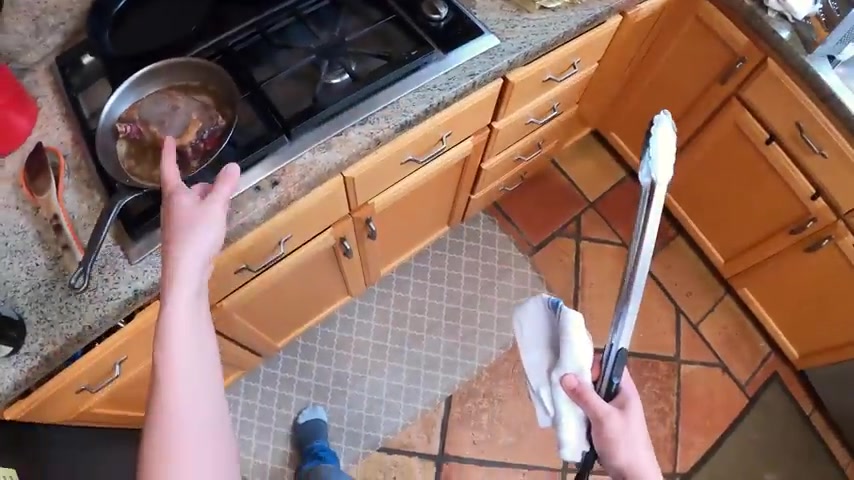
Um , the other important thing that I find is that it's much easier to cook one big steak , uh , than to cook a couple of thinner steaks .
Um , and that's just because with a nice big steak , like a two inch thick guy like this or , I don't know , inch and three quarters thick like that .
Um , there's a lot of room for error , you know , it takes , it takes a long time , uh , to get the center up to the temperature that you want it .
Um , and so there's , there's quite a big window between when it's done and when it's overdone .
Whereas with a thinner steak , that window is much smaller with a thinner stake , you also have less time to develop a nice crust on the outside .
So you kind of have to really , really blast it with heat with a thicker steak .
You can go a little bit more gently and not worry too much about it because basically all you're trying to do is get it to have a nice crust by the time the center is done .
So with a steak like this , it'll probably , that will probably be like 10 , 15 minutes .
The most important thing when you're cooking a steak though .
Thermometer , meat , thermometer .
This is a thermal po , it's about 30 bucks .
Um , it's made by a company called Thermal Works .
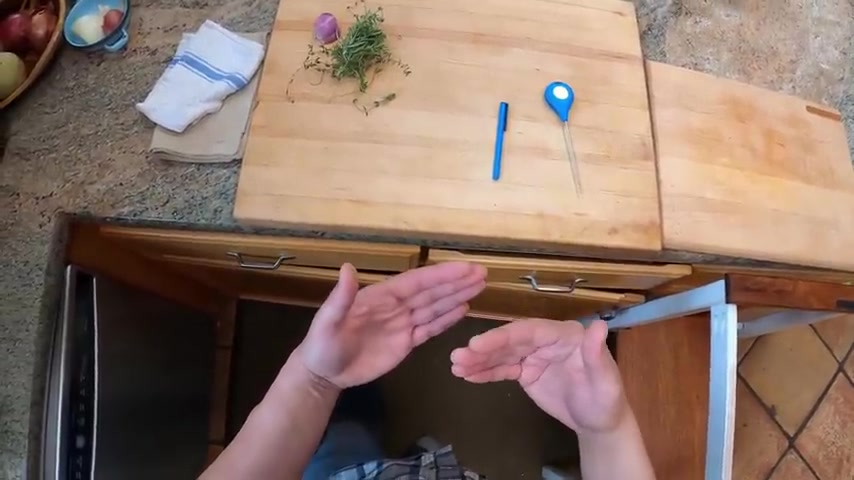
They also make a fancier one called the Thermo Pen , which I got here , Thermo Pen .
Um , they both do a fine job .
This one's a little bit faster .
A little bit more accurate and has some , some features , you know , some bells and whistles .
This one's also , I think , um , I don't know , 100 bucks or 200 bucks .
Uh , whereas this one's like 30 bucks and they both work just fine .
Um , the one thing you don't want to do is do the whole , um , the whole test where it's like , um , you know , some people say if you poke your face so like you , um , you poke your cheek and that's what a medium rare steak should taste , should feel like .
And you , um , you poke your , your forehead and that's like what a well done steak is .
But , um , I want you to try this experiment .
Go , uh , to anyone in your house right now , poke your own cheek and then poke their cheek .
Um , and tell me if it feels exactly the same because I pretty much guarantee you it won't .
Um And so I've always wondered , you know , it's like , do I have a medium rare cheek or does my wife have a medium rare cheek or what ?
Whatever ?
So , it's not a great way to gauge doneness .
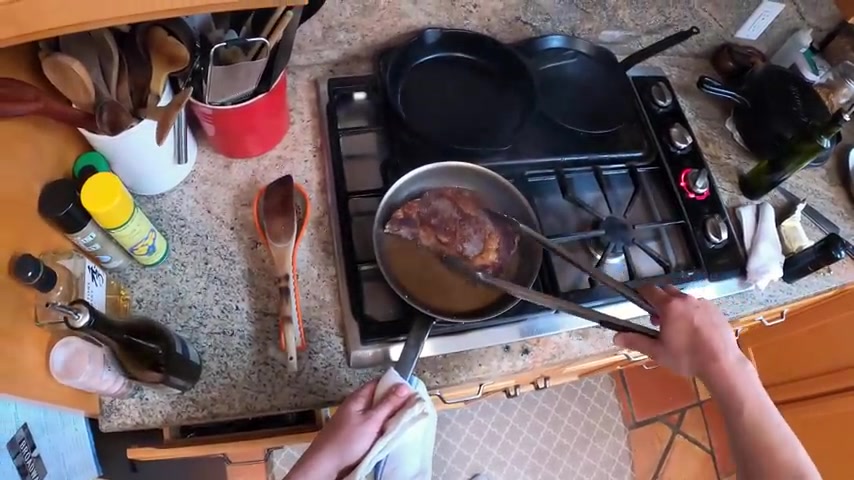
Poke , the poke test is not a great way to gauge doneness .
It also varies , you know , from different , different cuts of meat are going to have different textures when they're done at different times , different fat content is going to affect that .
So , really , it's , it's not a great way to tell if your meat is done unless say you're working at a restaurant and you're used to getting the same cut of meat over and over and over and you have practice , you know , you're doing it 50 times a day , then you can start getting good at the poke test .
But if you're home cooked and you're cooking steaks , only a couple of times a year , use a thermometer .
It's really the only reliable way to tell if your meat is done .
What you're aiming for with a thermometer .
By the way is , here's how you , here's how you take the temperature .
This meat is still going to be very cold because I , I just started cooking it .
You can see I have , I have the heat down relatively moderate right now , quite , quite low actually because I know , you know , once I start developing that crust , I know it's gonna take a while for the inside to come to temperature .
Um , and I don't want it to burn before that happens .
So take the thermometer , put it in at an angle and you're aiming for the coolest part .
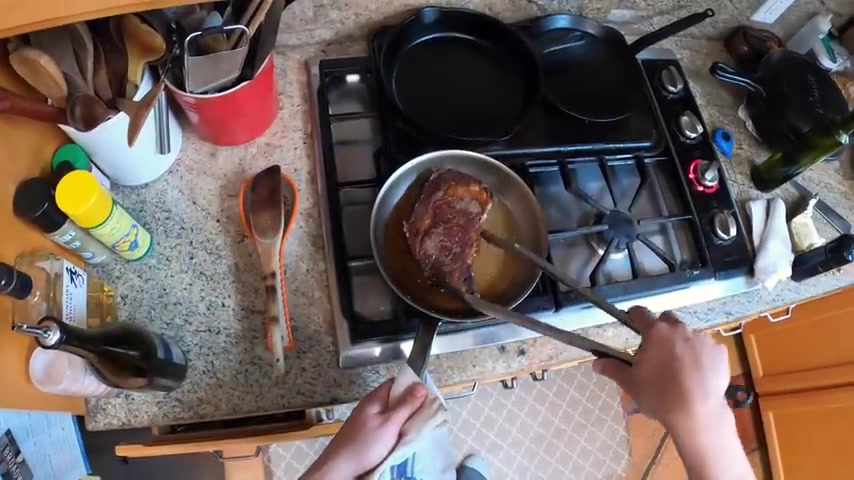
So right now that is 45 degrees in the center , basically fridge cold , 44 degrees , basically , fridge cold .
Um But what you're looking for with , with as far as temperature goes is , um , 100 and 20 F is about rare .
125 to 135 is medium to medium rare and like 141 145 degrees .
That's more medium well , and then anything above that is pretty much well done .
And your steak with , especially with a steak , this thick one that your pan searing like this , it's going to continue to rise in temperature as it rests after you're done cooking it .
So you want to pull it off , you know , five or 10 degrees early .
One interesting thing to note is that , um , I've done a bunch of taste tests before where , um , people , um , a lot of people claim that they like rare steak or that they like medium rare steak .
Um , and maybe they do , but , um , in taste tests that I've done with blindfolds on where people couldn't see the color of the meat .
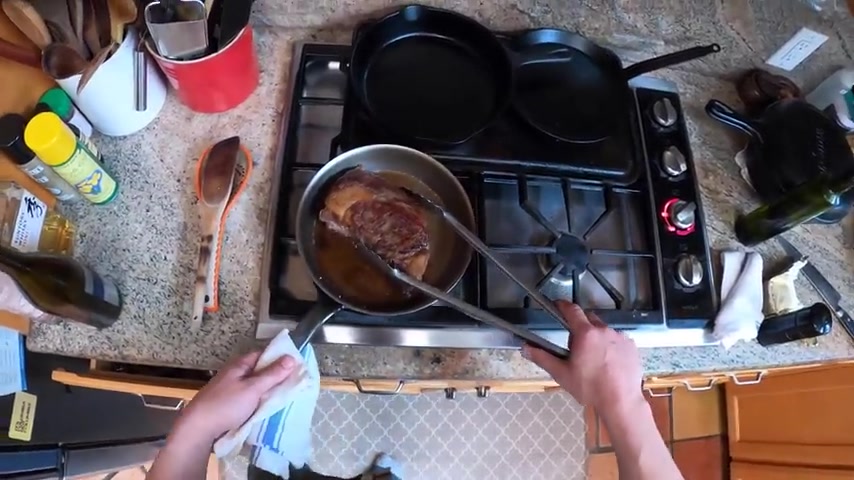
Um , frequently people will pick , um , a shade , uh , higher , a higher temperature than they claim to like .
So people who said that they like steaks would actually prefer the steak that's cooked to medium rare .
And people said they like medium rare will let prefer the steak that's cooked to medium , especially with a higher fat steak .
Something that's nicely marbled , you know , a prime rib eye .
Um , or if you , if you're able to get your hands on some , some good , um , like really good , like a five waggy that's like mostly fat .
Um , the higher the fat content , the higher the temperature I generally like it cooked to because beef fat , um , I don't like it when it's not rendered properly , it kind of tastes waxy .
Um So I like the fat to be kind of melting and rendering all throughout .
So the higher the fat content , the higher the temperature you can cook it to without it drying out and the higher I want it to go anyway , so that um so that the fat can really start to render and kind of , you know , run across your tongue and give you those juices .
So I'm , I'm just blathering on and on and on .
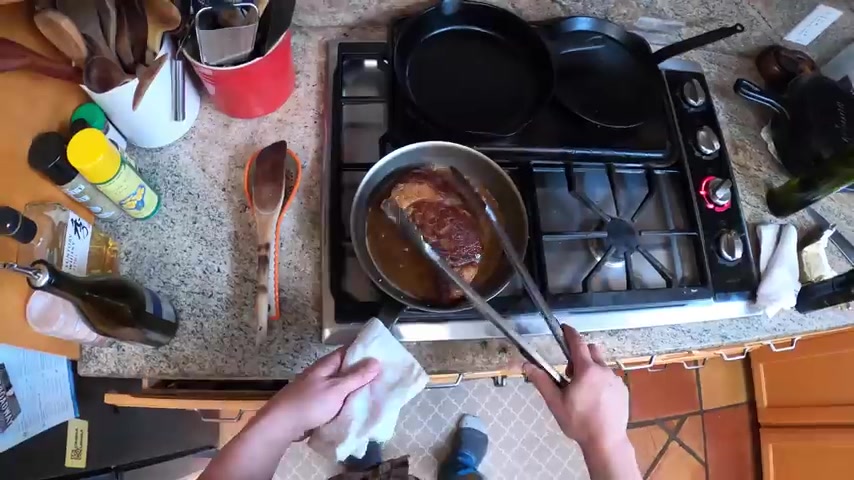
I'm gonna probably speed up the next uh the next section of cooking until I get to the next interesting part .
I'm just gonna be flipping this every once in a while until then .
Ok , so you can see what I'm doing right now is I'm basting basically just taking some of that melted butter and juices rendered beef fat and spooning it back over the top .
This just helps it .
Well , first of all , it speeds up the cooking process a little bit , but it also helps uh even out the browning .
So like if you see there's like little , you know , little valleys and crevices and stuff that don't come into contact with the pan .
And so when you spoon the hot melted fat back over it like that , it gets into those little crevices and helps them brown and gives you much more even browning .
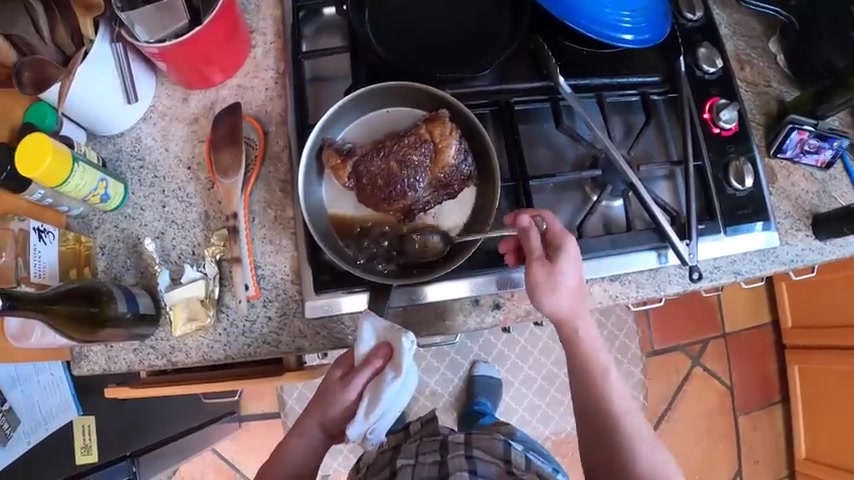
So you can see what I'm doing is I'm tilting the pan towards me a little bit so that the butter pulls up at the bottom and the rendered juices rendered fat and then I just take a big spoon and just splash it right over .
If you walk into any sort of um , western restaurant , professional restaurant that has a saute station .
Um , you're gonna see cooks doing this to most meats .
I would do this for fish .
I would do it for chicken .
I would do it for pork chops .
I would do it for steak .
Um , it really helps get that nice even browning .
What I have ready here is some rosemary and some thyme from the garden .
This is a little chunk of shallotte that I'm just going to very roughly chopped .
Maybe I'll do one clove of garlic too .
Smash .
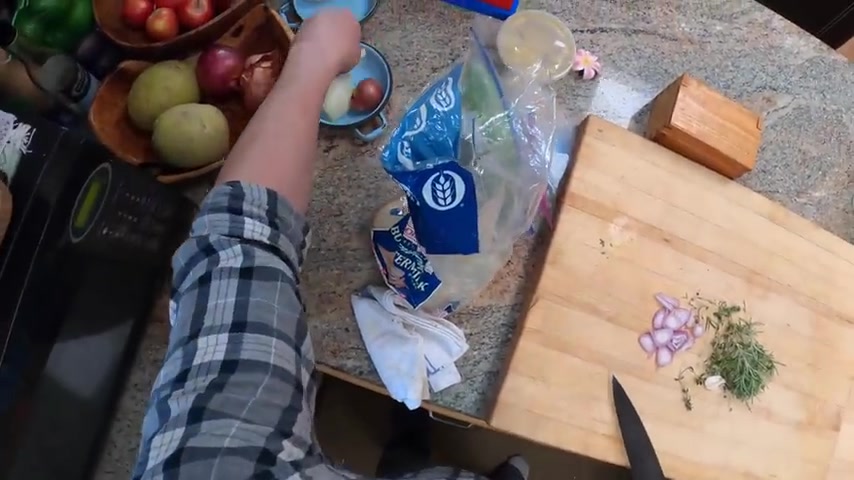
You can leave the skin on .
So all this stuff is basically just gonna go towards flavoring the meat .
Um , it's not really gonna stay on there .
You ain't got all that and see where we're at .
Oh , look at that color .
There we go .
Looking nice .
So we're at 100 degrees a little lower than 100 degrees .
Very close there .
So when you're coloring a piece of meat like this , a steak , especially what I , what I aim for is as dark as possible without being black , black is burnt and burnt is not good .
You know , of course some people like their steak charred , especially if it's coming off the grill .
You might want some of that charred flavor .
So I'm going to put this stuff right on top like that and then I'll take my spoon .
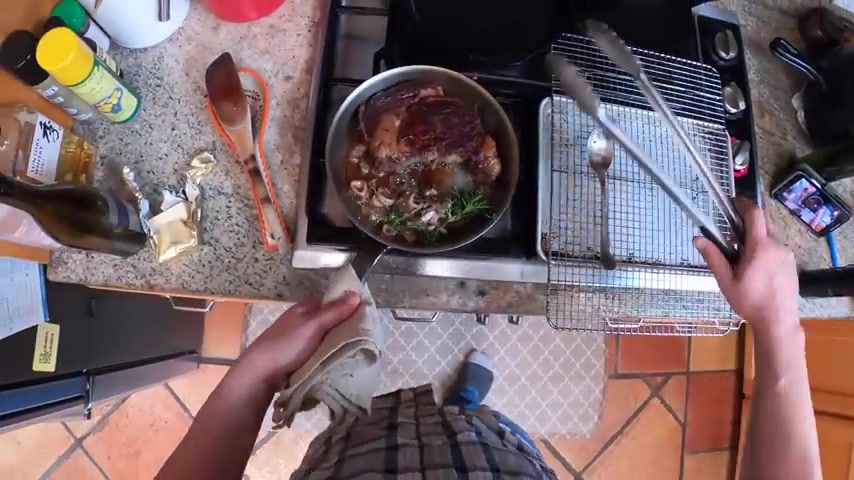
How will that garlic on top ?
And I'm gonna start basting .
I'm going to take this guy off .
It's at about 105 degrees right now .
Right .
Put these right over here .
Um , there's debate in the steak world about whether to rest your meat or not .
I know that , um , you know , Adam Perry Lang who , uh , has a restaurant in L A and has been cooking steak for a long time .
Um , sort of one of the masters .
Um , he , uh , he doesn't like to rest his meat .
He , um , he does , he does a method that he calls scuffed and charred where he kind of takes a knife and kind of scuffs up the surface and then , um , uh , chars it really well , either in a grill or in the pan and then serves it sizzling sizzling hot .
Um , and I think there's a lot to be said for that , you know , like having a sizzling hot steak hit the , hit the table is , um , is really good .
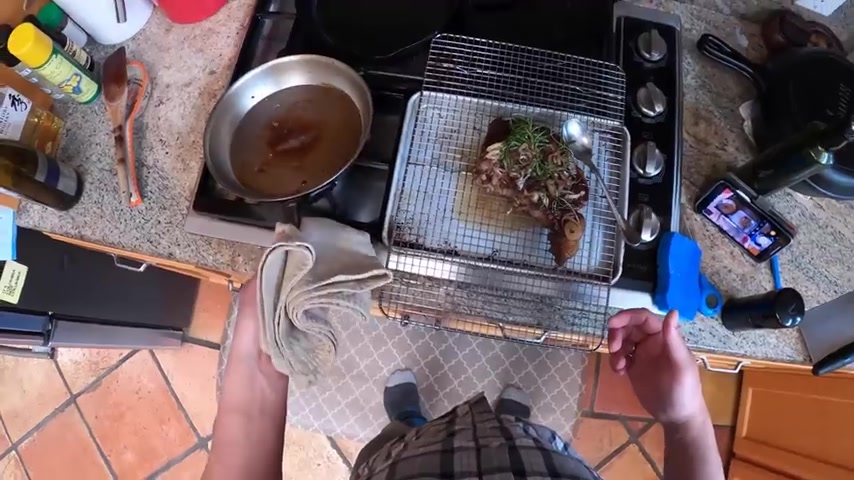
Um , the reason why you might want to rest your meat is because , um , if you cut open a steak right after it's been out of the pan , um , the juices in it are still very sort of runny .
Um , and , you know , there's , there's a little bit of debate over why they're still running .
Why they're so runny .
Um , a lot of times , you know , I've heard that it's because the muscle fibers , um , are tightened and then when you let them cool down , they relax and so they don't squeeze out as much moisture .
Um , then I think in modernist cuisine they talk more about the , the viscosity of the , of the juice is changing as they , um , as they cool down and thicken a little bit over time .
Um The , the point is though that when you , when you cut open a piece of steak , a piece of meat right after it's been cooked , um , it will tend to , uh the juices will tend to run out a lot faster .
Um And then if you uh uh let it rest a little while first , um , you'll notice I didn't put pepper onto the steak this time .
Um It's just salt from the day before , um , or from two days ago .
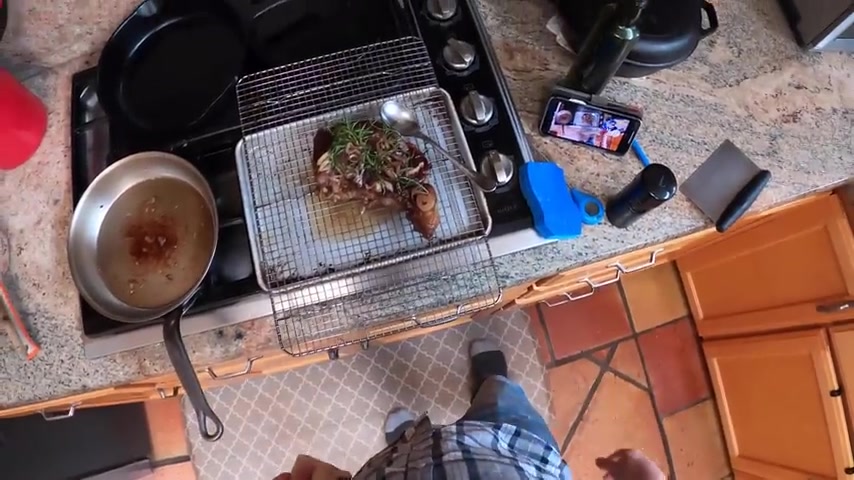
Uh So I , I sometimes pepper my steak before cooking it .
Um Some people don't because they don't like the flavor of um uh pepper that's been , you know , charred in a skillet or on the grill .
I actually kind of like that flavor sometimes .
So typically I would uh pepper my steak today .
I decided not to just for the helvet .
You know , what I did forget to do though is get those edges .
We want to get these , get these edges here because I just need , I just need some love too .
You can see the spinalis mu muscle that's going to be so good .
Um , nice big chunk of it .
The spinal put that in there .
Get this edge here .
This is a great big steak .
Um , probably between the three of us , we're gonna eat about half of it for lunch .
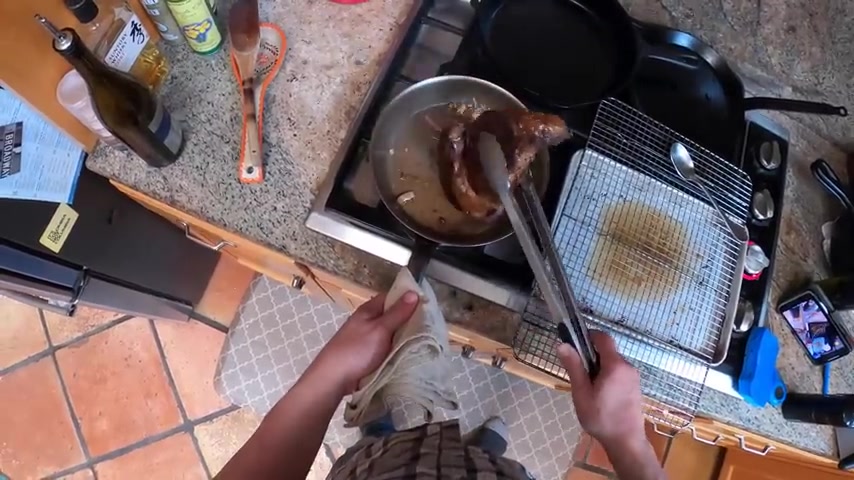
And then what I'm going to do is I'm going to let the rest of it cool down and for dinner we're going to make a steak salad or maybe even tomorrow we'll make a steak salad salad out of it .
I think like a Thai style steak salad .
I really , really like cold steak .
I almost like cold steak better than , better than hot steak .
In fact , um , especially if you have like a nice , if you have a very lean steak one without a ton of fat in it , um , or a ton of flavors , you know , something like an , like a , uh , a tri tip or an , or a round , um , top round or eye round .
Um , those steaks tend to actually do better cold so I'll sear them , um , let them chill overnight and then , uh , the next day slice them thin and use them in a salad .
Um , whatever that salad may be , you can use , make like a miso dressing and do it with cucumbers .
Um , you can do like a Thai style dressing with , um , with fish sauce and chilies .
Um , which is what I'm with you tonight .
Um , you can you can toss it with your caesar salad if you want .
Um , some people don't like that after you rest .
It , um , loses the crispy crust .
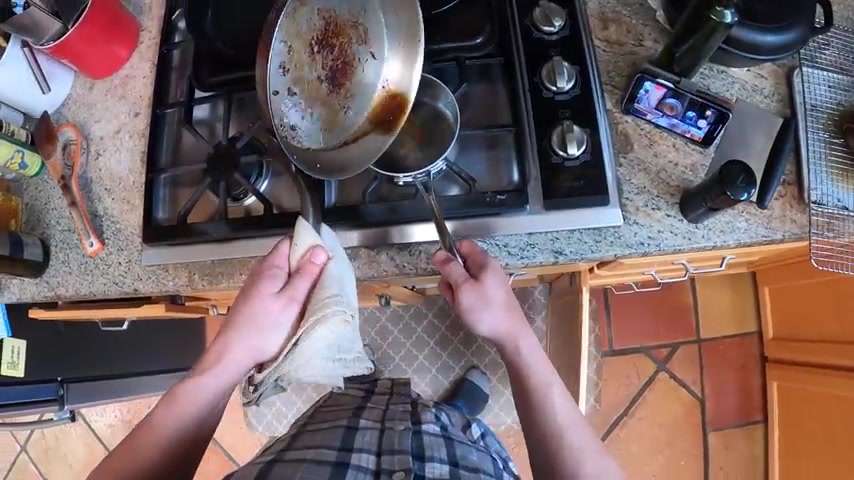
Um , so what I do is I take , I kind of get like to get the best of both worlds .
So I take the pan , I reheat all the juices in there .
Actually .
You know what ?
I'm gonna make a pan sauce while we wait .
Just a second .
I'm gonna get a second pan right here for the juices .
Let's get this little pot for the juices since we have all this nice fond in the pan .
Um It seems a shame not to make a pan sauce .
So I'll make a real quick real , real quick pan sauce .
Um I'll do some , some bourbon , let's do some bourbon and some , uh some little mustard , right ?
We're gonna deglaze this .
It's probably gonna catch on fire .
Um In fact , it's almost definitely gonna catch on fire .
So look out ready .
Take this off the heat .
You ready ?
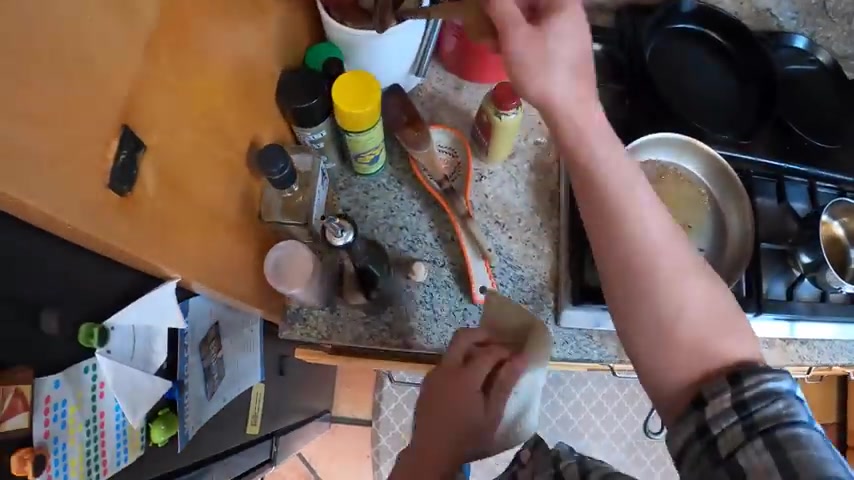
Did not catch on fire .
That's fine .
Yeah , he plays with some bourbon .
I gonna throw some mustard in there .
Golden's , if I had like a whole grain mustard , I would use that .
I wanna get some stock and a little extra butter .
You know , you can use whatever liquid you want .
Red wine tequila .
Um You could also saute some shallots in there , um , or some garlic .
I'm just going super simple here .
Right ?
And then finally a little extra knob of butter do this off heat .
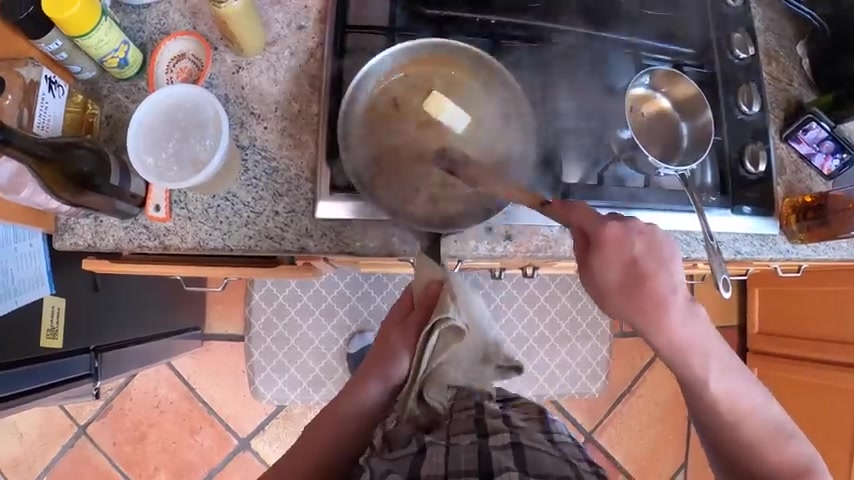
You must that butter in there ?
All right .
So , while that pan sauce is gonna , it's gonna come together , I'm reheating the , uh , the fat from the steak and let's get a nice big plate for this .
That'll do , yeah .
You want that fat to get kind of smoking hot ?
Ok .
I'm gonna pepper this up .
Get sick and tired .
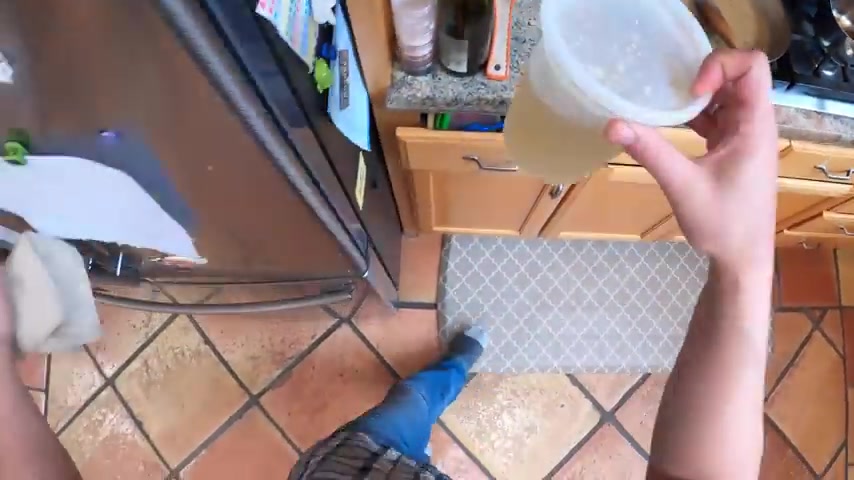
I , it up so that butter should emulsify in and this will get just a little bit thicker as it reduces .
It's also fresh chicken stock , like a homemade chicken stock .
So there's gelatin in there .
So that'll thicken up the sauce as it reduces as well .
If you don't have a homemade chicken stock , you can use store bought stuff and just bloom a little bit of , you know , a couple of teaspoons of gelatin in there while it's cold .
And then when you add it to your pan like this , as it reduces , it'll act a lot like , you know , like a good homemade or restaurant style a stock because that gel adds viscosity and gives a sort of a richness that helps it emulsify with the butter with the butter .
Super hot enough yet .
No .
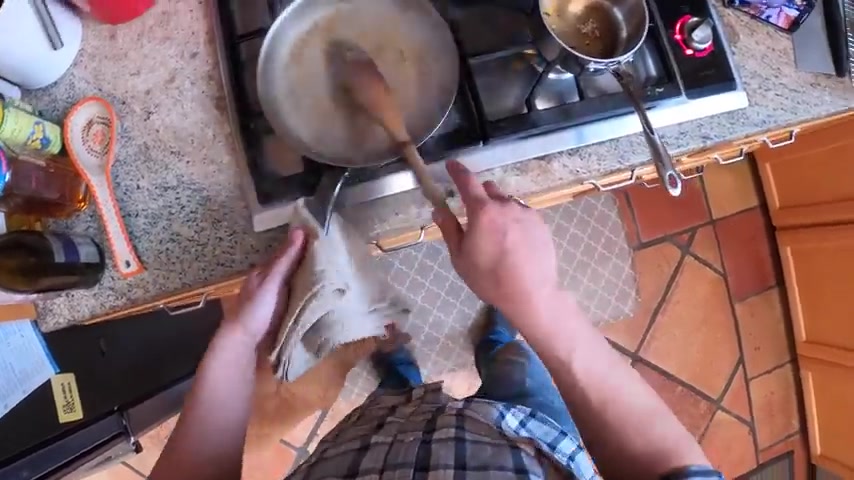
Are you sizzling almost .
I trouble .
All right .
So this is the trick .
Hot fat , hot pan drippings .
After the steak is rested , you pour it right back over the top .
It sizzles , it reheats the surface , it gets it nice and crispy again and then we're ready to go .
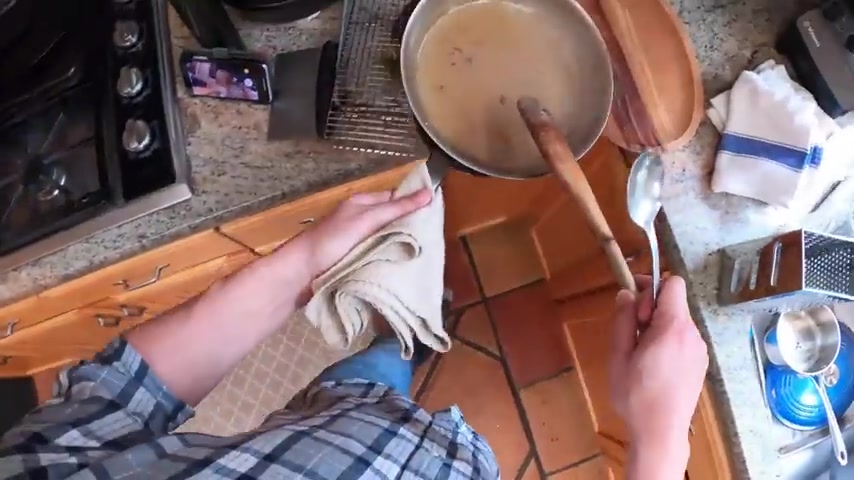
I'm gonna , I'm gonna put the sauce on the bottom of the plate just so that the steak doesn't .
Uh , so we can show off that nice crust on the top .
This is gonna go .
There we go .
Here we go .
Look at that .
That is a pretty good looking steak .
Let me get my steak knife here .
How does that look to you ?
It looks pretty good to me .
Let's cut off a piece .
Cco see how we did on the inside .
Actually let me taste , start with the spinalis .
Hm .
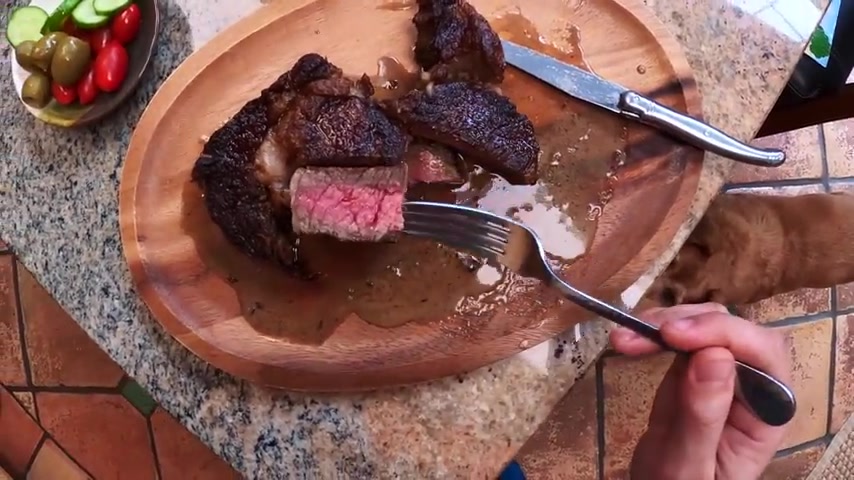
Oop , sorry , family came in .
So you can see with um uh with this method where you're um cooking it over relatively high heat the whole time , you know , you're not doing sous vide , you're not doing a reverse sear .
You do get this gradient .
So there's a little bit of sort of like well doneness on the outside and then it progressively gets more and more rare as it gets towards the center .
Um So if you don't like that , you do , um you can do a reverse sear .
So follow , you know , go to go to series heats , which is where I have published that method , I think , um or cooks illustrated where I originally published that method .
Um If you have access to the 2007 June July issue , um that's where it is .
Um or just do it this way if you don't mind having that sort of more traditional steakhouse look to it .
Um , this one I took to , uh , it ended up at about 100 30 to 100 and 35 degrees , which is sort of , um , you know , medium rare , medium rare .
A little trend tending towards a medium which is , um , a good , a good place to aim for me .
At least when you have , um , a nice fatty , rich piece of steak like this .
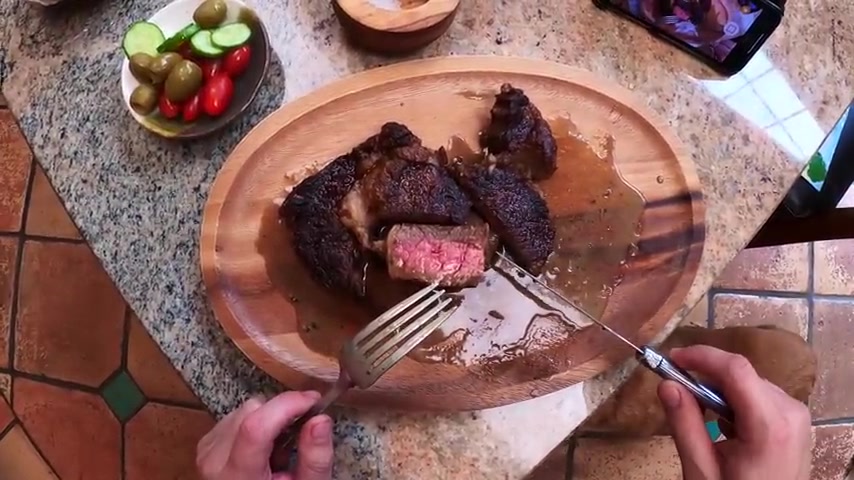
Um , if I was , if it was a leaner thing like a tenderloin , um , I would aim more towards the one t 1 20 to 1 25 rare zone .
Um , but with a nice rich um , fatty cut like rib eye .
This is about perfect for me .
Hm .
It is delicious .
Oh , yes , you got some too .
It girl .
Bye bye .
Are you looking for a way to reach a wider audience and get more views on your videos?
Our innovative video to text transcribing service can help you do just that.
We provide accurate transcriptions of your videos along with visual content that will help you attract new viewers and keep them engaged. Plus, our data analytics and ad campaign tools can help you monetize your content and maximize your revenue.
Let's partner up and take your video content to the next level!
Contact us today to learn more.